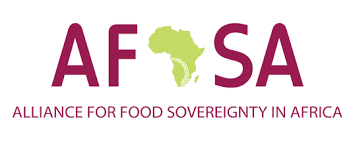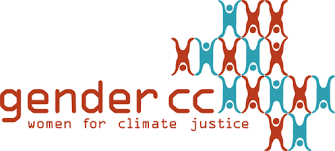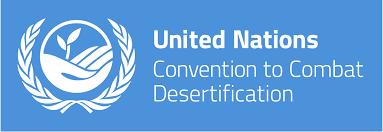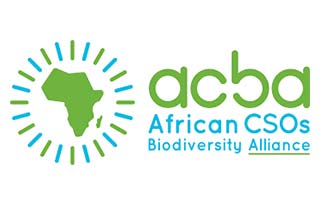"Africa and the Climate: an Opportunity to Adapt and thrive "
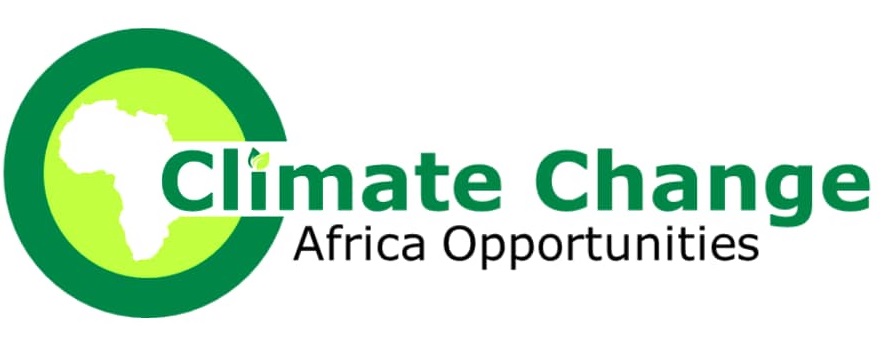
|
|
SeatDemocratic Republic of Congo |

|
climatechangeafricaopp@gmail.com |
"Africa and the Climate: an Opportunity to Adapt and thrive "

|
|
SeatDemocratic Republic of Congo |

|
climatechangeafricaopp@gmail.com |
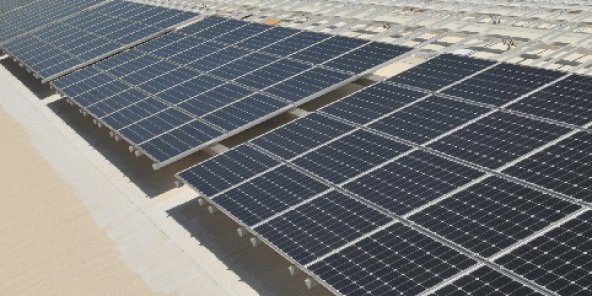
INVESTMENT PLAN FOR DEVELOPMENT RENEWABLE ENERGIES IN AFRICA
SUMMARY
Faced with climate change and its implications in the energy field in Africa, it is time for African countries, in their sectoral efforts, to find strategies to diversify their economies, to put a particular emphasis on the development of renewable energies. Renewable energies, namely: hydro, solar, wind, geothermal and biomass, are developing intensely all over the world, driven by the need to fight global warming by reducing greenhouse gas emissions.
Reason why and given its mission to improve and strengthen African resilience to the challenges of climate change in the field of energy, and in accordance with its strategic plan 2020 - 2030, that the pan-African and indigenous organization Climate Change Africa Opportunities (CCAO) has developed its enthusiasm for the development of renewable energies in Africa.
This investment plan is a strategic and in-depth planning document allowing Climate Change Africa Opportunities (CCAO) to propose renewable energy development projects with high potential and high quality which may be the subject of possible partnership links with partners and donors involved in supporting energy resilience in the context of climate change in Africa.
ENERGY CONTEXT OF AFRICA
Understanding the issue of rural electrification in sub-Saharan Africa presupposes that we understand its context in its triple dimension.
Demography
In 2019 the total African population is estimated at more than 1.2 billion people, of which nearly 1 billion are in sub-Saharan Africa: 395 million in East Africa, 350 million in West Africa, 143 million in central Africa and 61 million in southern Africa. In 50 years (2065) the total population of Africa will more than double, to 3 billion. It could increase to 4 billion inhabitants in 2100. This increase will be largely due to SSA where the population will remain for a long time the youngest in the world with an average fertility rate (in 2019) of 5.3 children per woman in West Africa, 5.2 in Central Africa and 4.5 in East Africa. This settlement is not constrained by the territory.
In 2015, according to the World Bank, sub-Saharan Africa was 38% urbanized. If the population of sub-Saharan Africa is still predominantly rural, the trend is for spectacular urban growth in the coming decades, bringing out a now general category: "the urban poor" whose economic misery already echoes that of rural areas, with major implications for the solvency of electricity demand. The political settlement of this issue is predominant over the electrification of rural populations.
Access to electricity
Most of the electricity sectors in sub-Saharan African countries are in a transition phase in the sense of implementing regulatory reforms, the main objective of which is to collect financing and open the sector to new operators. However, rural electrification and access have rarely been considered as essential concerns in these reforms, water supply and transport having been favored over access to electricity which was not even included in the Millennium Development Goals (MDGs). The restructuring model was inspired by countries where the rate of access to electricity is equal to, or close to, 100%: (i) the government had to ensure that electricity was supplied at a uniform price ; (ii) the financing of rural electrification could only depend on external aid and not on financing from the State or the Electricity Company.
What characterizes Sub-Saharan Africa, and makes it an exception compared to the developing countries of Asia or Latin America which have completed their urban electrification rate (> 95%), is a low rate initial access, most countries having an urban electrification rate <50%. A generalized system of single operator to complete their electrification by generalizing access to electricity in the countryside is therefore not necessarily the model to follow.
The African continent is the least electrified in the world. Of the 1.3 billion people who do not currently have access to electricity, 600 million are in Africa. Regional inequalities are large, revealing a real divide between North Africa and South Africa on one side and sub-Saharan Africa on the other. According to the International Energy Agency, the African population without access to electricity in millions and in percentage is distributed as follows:
Currently, 14% of the rural population of sub-Saharan Africa has access to electricity against 64% of the urban and peri-urban population. In more than 20 sub-Saharan Africa countries, rural electrification concerns less than 5% of the total population. This situation is partly explained by: (i) the lack of material infrastructure, in production and distribution of electricity, which is explained by the slowness, on a continental scale, of the electrification process taking into account the volume of investment required, approximately $ 50 billion per year; (ii) a widespread institutional deficiency which results in master plans and action plans too often insufficient to stimulate a dynamic offer; and (iii) the low income of rural households, which is the source of endemic weakness in demand, which forces any rural electrification policy to henceforth be integrated into a poverty reduction strategy: access to electricity is considered an essential socioeconomic objective. Above all, the inability of national electricity companies to absorb new rural customers without worsening their own financial situation limits the implementation of political will and the operationalization of financing for rural electrification.
Technological deficit
With the exception of biomass, which is unevenly distributed and not very conducive to the production of electricity, and micro-hydro, which is not always present and often seasonal, the economically available energy resource at low cost therefore seems to be lacking in rural Africa. Unless we consider the arrival of a new energy era, that of solar energy, of which it is certain that the major beneficiaries will be the emerging countries on the condition that they can combine strong sunshine, sustained growth in demand electricity, currently 2.7% / year in sub-Saharan Africa, and a secure regulatory framework for investors. These conditions can be fulfilled in Africa, a priority task of which should be to gear up for the ongoing solar revolution, driven by: a / the fall in the prices of photovoltaic cells, the cost of which should fall further by 60% in the next ten years; b / the extension of their lifespan and the greater reliability of their materials. All of these innovations are currently driven by 100% electrified China thanks to off-grid domestic solar energy. Let us add, in the spirit of the stipulations resulting from COP 21, that the carbon footprint of the sun is now positive if we are to believe studies carried out at the University of Utrecht which conclude that the energy required is accelerated and the emission of greenhouse gases in the production of solar panels.
For Climate Change Africa Opportunities (CCAO), focusing the development of rural electrification in sub-Saharan Africa on the development of the solar resource also means making Africa part of an energy revolution where solar will be "the first link in a value chain" comprising electricity storage, smart grids and the spread of the internet. From this point of view, Africa is a blank page and it is urgently necessary to have the right vision of what should be written there.
OBJECTIVES/STRATEGIC RESULTS
By 2030, Climate Change Africa Opportunities (CCAO) aims to achieve the following two strategic objectives:
1) Increase the production of electricity from renewable sources.
By 2030, Climate Change Africa Opportunities (CCAO) plans to develop projects and partnerships that will contribute to and facilitate the access of African and indigenous populations to renewable energies by reducing the cost of hydroelectricity and solar energy,wind, wave and tidal and geothermal in Africa.
2) Improve energy efficiency in rural and peri-urban areas in Africa.
By 2030, Climate Change Africa Opportunities (CCAO) plans to develop projects and partnerships that will develop and make accessible new materials, technologies and processes for rural and peri-urban areas in Africa.
3) Mobilize international funding and donors to support the development of renewable energies in Africa.
MOTIVATION AND BENEFITS OF RENEWABLE ENERGY IN AFRICA
The characteristic of new and renewable energies which excludes this enormous traditional source of energy that is the plant and forest biomass used especially for cooking food, is to be diffused on the territory, operating in remote areas and isolated from networks distribution, almost exclusively in the countryside. For a long time their cost per kWh was considered prohibitive but, in view of the current technological revolution, particularly in solar, it can be said that there has been a mistake about their potential importance in Sub-Saharan Africa. These energies are particularly suitable for meeting the needs of indigenous populations, the majority of whom are low income.
Climate Change Africa Opportunities (CCAO) divides these energies into two categories of profoundly different nature:
1)Energies that use hard technologies to exploit naturally occurring deposits, in the open air or in the basement: solar, wind, small hydro and geothermal;
2)Energies that are part of a rational use of biomass: agro and biofuels, forest and all kinds of waste, biogas.
MAIN TARGETED ENERGY SOLUTIONS
Climate Change Africa Opportunities (CCAO) intends to develop small new and renewable energy projects: less than 5 kW, if it is to supply rural dispensaries or schools, or even 1 kW at the domestic level in Africa.
For Climate Change Africa Opportunities (CCAO), the objective of developing renewable energies must come to the forefront of African energy policies: it is the only way to allow the majority of the population to have access to a modern source of energy, electricity, and therefore to meet essential needs, such as lighting, which will generalize educational programs. The ensuing mini networks will be a step towards eventually connecting to the public network.
Recognition of existing potential is the basis for the development of these energies. In Africa, this potential differs according to the regions.
Solar potential
It is considerable: 47% of the African territory receives more than 2,100 kWh / m², 27% more than 1,900 kWh / m², the last 26% more than 1,500 kWh / m². In addition, the possibilities of using solar thermal energy at the village level should not be overlooked: solar water heaters. The question of the use of this potential is linked to the costs of photovoltaics which is falling faster. In addition to domestic use (with a small PV panel of only a few watts, one can have essential services such as lighting, recharging of telephones and powering a radio) which, as a result, will Developing, the use of photovoltaic systems can be viable to supply health posts (conservation of vaccines) of collective equipment (schools) as well as for a daytime pumping of the groundwater. These systems have also proven to be effective for telecommunications and institutional applications in remote areas.
Wind potential
The wind potential of Sub-Saharan Africa, straddling the equatorial and tropical regions, is not very significant, except in certain coastal regions of Mauritania, in East Africa in the Horn of Africa and in Eritrea or in South Africa, all regions that can be described as those of the “East, West and South extremes”. Most wind turbines in sub-Saharan Africa are actually used to provide mechanical power to pump water. There are 300,000 of these in South Africa.
Geothermal potential
There is strong geothermal potential in East Africa, valued at 9-10 GW. In Kenya, the Olkaria field, northwest of Nairobi, now has a potential of 609 MW.
Biofuels potential
Biofuels have been the subject of widespread controversy around the world amid a food crisis. In Africa, the use of biofuels will have a dual purpose: a / to reduce the oil bill by mixing them with gasoline (bioethanol) or diesel (biodiesel); b / be a substitute fuel for fuelwood and charcoal in suitable stoves, ethanol can be used as clean fuel as is already being done in Ethiopia, and will soon be in Tanzania and Ghana. This alternative to fuelwood seems sustainable on condition that it is supported by the energy policies of the countries.
Small hydro potential
Small hydropower uses reliable technology, which has been adapted to rural areas far from the grid and for multiple uses of water and energy. It includes units of less than 10 MW, with an efficiency of 30 to 60% and an average annual production of between 3,500 and 6,000 kWh per kW installed. In the best cases, it can prove to be a profitable possibility of obtaining adequate rural electrification. The potential of mini hydropower is, in general, not very well known for the many small rivers and would be 15 GW for a country as watered and vast as the Republic of Congo (DRC) and 5 GW in Africa of the West, partly Sahelian. It is however possible to have an idea of what this potential represents, vis-à-vis sustainable development, by a connection to a mini-network, because it can be used in small and isolated localities near a river or less than 20 km. Africa has untapped potential, especially in its eastern and southern parts, due to the high landforms. However, the question of the economic viability of these small, even very small installations, in regions where demand is initially poor, remains unanswered. The supply of electricity must rightly encourage an increase in income.
FINANCING AND RECOMMENDATIONS
The main obstacle to the implementation of new and renewable energy projects is not technical feasibility but their financing. Climate Change Africa Opportunities (CCAO) intends to mobilize international funding and donors to develop partnerships and innovative means to finance them and make existing techniques available to poor populations: subsidized funding and grants to statups and local projects, for example, through suitable loan mechanisms. Mass production of hardware must be able to lower costs.
Climate Change Africa Opportunities (CCAO) small renewable energy projects will cover rural areas where the solvency of demand and the ability to pay are uncertain. To make these projects sustainable, Climate Change Africa Opportunities (CCAO) intends, on the one hand, to mobilize subsidies and, on the other hand, to integrate these projects into a broader framework of African economic development.
The emerging energy revolution, against the background of an accelerated drop in the cost of solar kWh, will precisely facilitate the development of mini grids.
Meanwhile, Climate Change Africa Opportunities (CCAO) intends to harmonize and generalize the equipment management methods of community projects that call on the collective responsibility of local and indigenous communities, convincing them of the need to cover operating costs and expenses renewal without depending on external aid.
Climate Change Africa Opportunities (CCAO) also intends to mobilize the private sector, which must be able to find reasons to invest there. The use of the private sector is an additional factor in strengthening this implementation, which takes account of traditional structures. It’s an innovative remedy. The strength of the private sector, to intervene effectively, is in its management tool, breaking with bureaucratic behaviors and focused on results. It is also in a supposed financial capacity provided that the projects in which to invest are profitable.
One of the major constraints to the implementation of large-scale rural electrification programs is the virtual absence of a private sector capable of ensuring an adequate supply of services in the various fields (detailed project studies, supplies of equipment, assembly, operation and maintenance of facilities) and to meet the demand for services that will arise from the ramp-up of rural electrification programs.
Climate Change Africa Opportunities (CCAO) finally notes that the development of renewable energies will cause job creation, mainly for mounting PV panels and installing mini-turbines, plus the creation of infrastructure to support the panels, to channel incoming water. It will be necessary to bring the electricity produced in a mini dispatching center equipped with equipment such as inverters. If a mini network is created, it will have to be mounted. Maintenance jobs will also be needed to combat the deterioration of equipment, serving several centers or villages, occupied by electricians, at the technical level, who can be trained on the job.
We can simplify counting that the installation of 1 MW will involve the training of an electrician of all categories, manager or technician (engineer manager, supervisor, technician level BTS). Execution staff will be trained directly on the job site.






